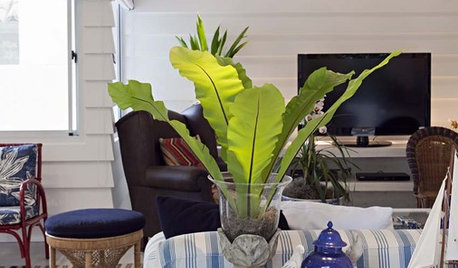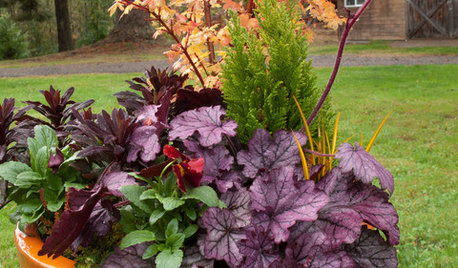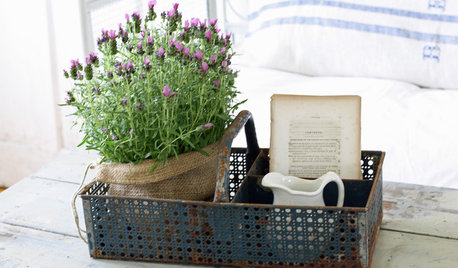Proper container soil for sub tropicals
linchat
14 years ago
Related Stories

HOUSEPLANTSGet a Tropical Splash With a Bird's Nest Fern
Sword-shaped leaves make this fern a stunning accent — and you can even mount it on wood for a wall hanging
Full Story
CONTAINER GARDENS3 Steps to Creating Quick, Easy and Colorful Succulent Containers
Take a bright container, add a colorful succulent or two and have a professional, summery design in minutes
Full Story
FALL AND THANKSGIVING5 Container Gardens for Fall, the Holidays and Beyond
Make planting easy with a single container, year-round plants and a sprinkling of simple seasonal accents
Full Story
GARDENING GUIDESGarden Myths to Debunk as You Dig This Fall and Rest Over Winter
Termites hate wood mulch, don’t amend soil for trees, avoid gravel in planters — and more nuggets of garden wisdom
Full Story
ARTThe Beauty of Bonsai — Living Art, Rooted in Harmony
Create your own emblem of nature's balance with an art form dating back 1,000 years
Full Story
HOUSEPLANTSOutsmart Winter — Make Houseplants of Your Garden Growers
No need to watch Jack Frost play Wreck the Rosemary. Bring your garden inside for the winter, using containers and these guidelines
Full Story
GARDENING GUIDESCommon Myths That May Be Hurting Your Garden
Discover the truth about fertilizer, soil, staking and more to keep your plants healthy and happy
Full Story
FALL GARDENING5 Ways to Put Fall Leaves to Work in Your Garden
Improve your soil and yard the organic way with a valuable garden booster that grows on trees
Full Story
HOUSEPLANTSMeet a Palm That's Fine With Fluorescent Light
Get the look of the tropics without the full-on sun and high humidity — parlor palm tolerates regular indoor conditions with aplomb
Full Story
HOUSEPLANTSHow to Grow Orchids Indoors
Orchids are the exotic aristocrats of the flower world and can make themselves comfortable in almost any home
Full Story







tapla (mid-Michigan, USDA z5b-6a)
linchatOriginal Author
Related Professionals
La Marque Landscape Architects & Landscape Designers · Brookline Landscape Contractors · Byram Landscape Contractors · Pahrump Landscape Contractors · Setauket-East Setauket Landscape Contractors · Seymour Landscape Contractors · Yucca Valley Solar Energy Systems · Spokane Window Contractors · Idylwood Window Contractors · Miami Springs Window Contractors · Morro Bay Window Contractors · Peoria Fence Contractors · Syracuse Fence Contractors · Framingham Fence Contractors · Newington Fence ContractorslinchatOriginal Author
tapla (mid-Michigan, USDA z5b-6a)
linchatOriginal Author
tapla (mid-Michigan, USDA z5b-6a)
linchatOriginal Author
alicia_grower
tapla (mid-Michigan, USDA z5b-6a)
jodik_gw
tapla (mid-Michigan, USDA z5b-6a)
meyermike_1micha
tapla (mid-Michigan, USDA z5b-6a)
shanielynn